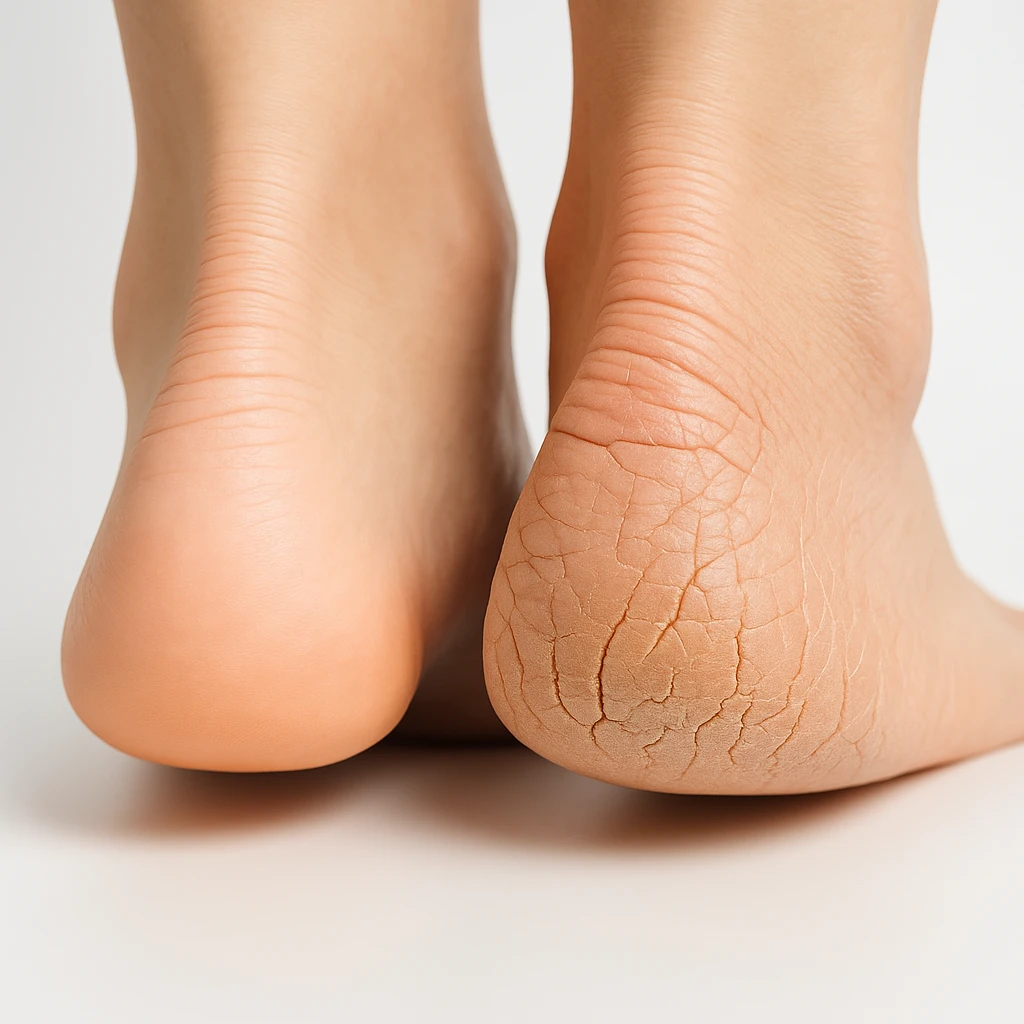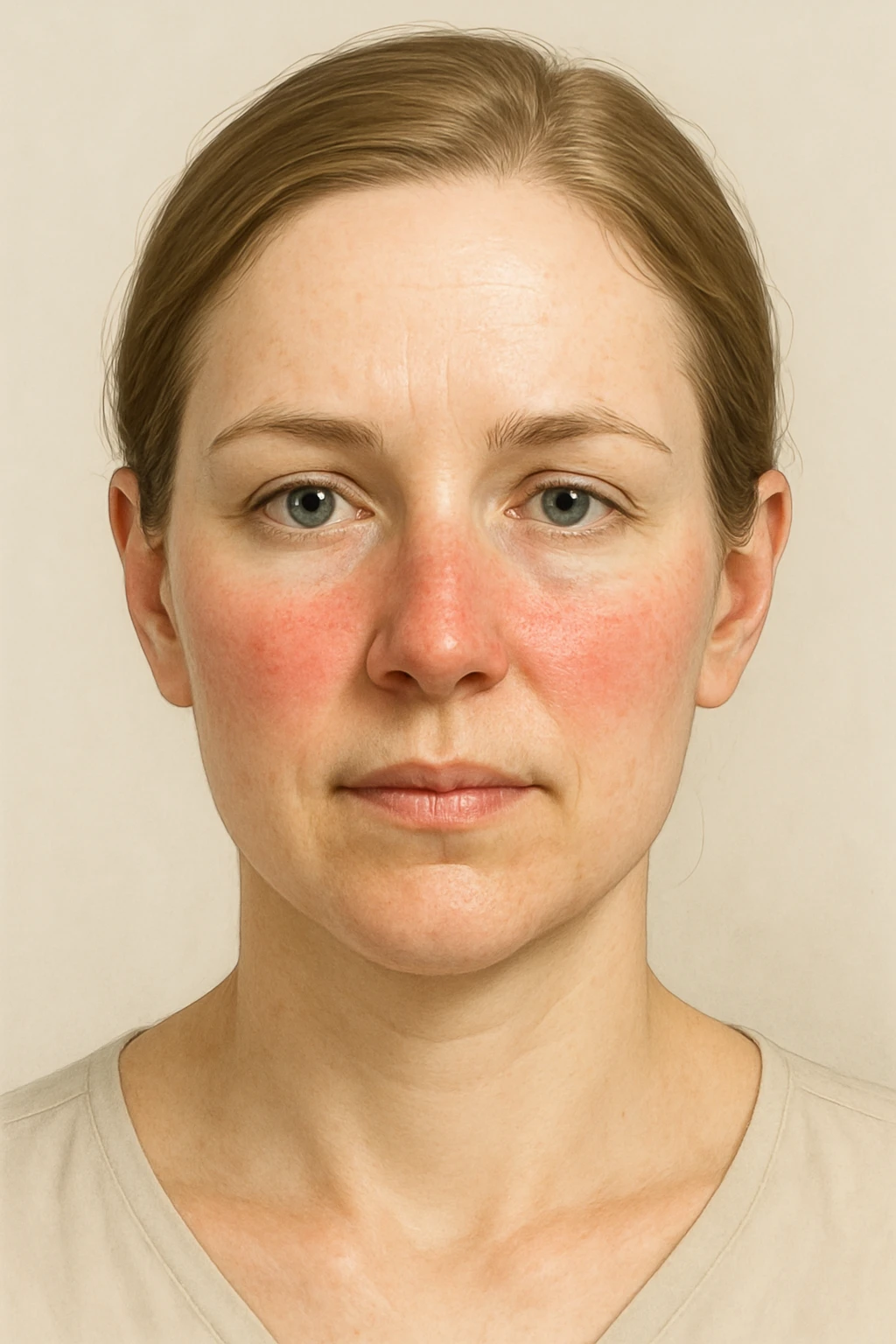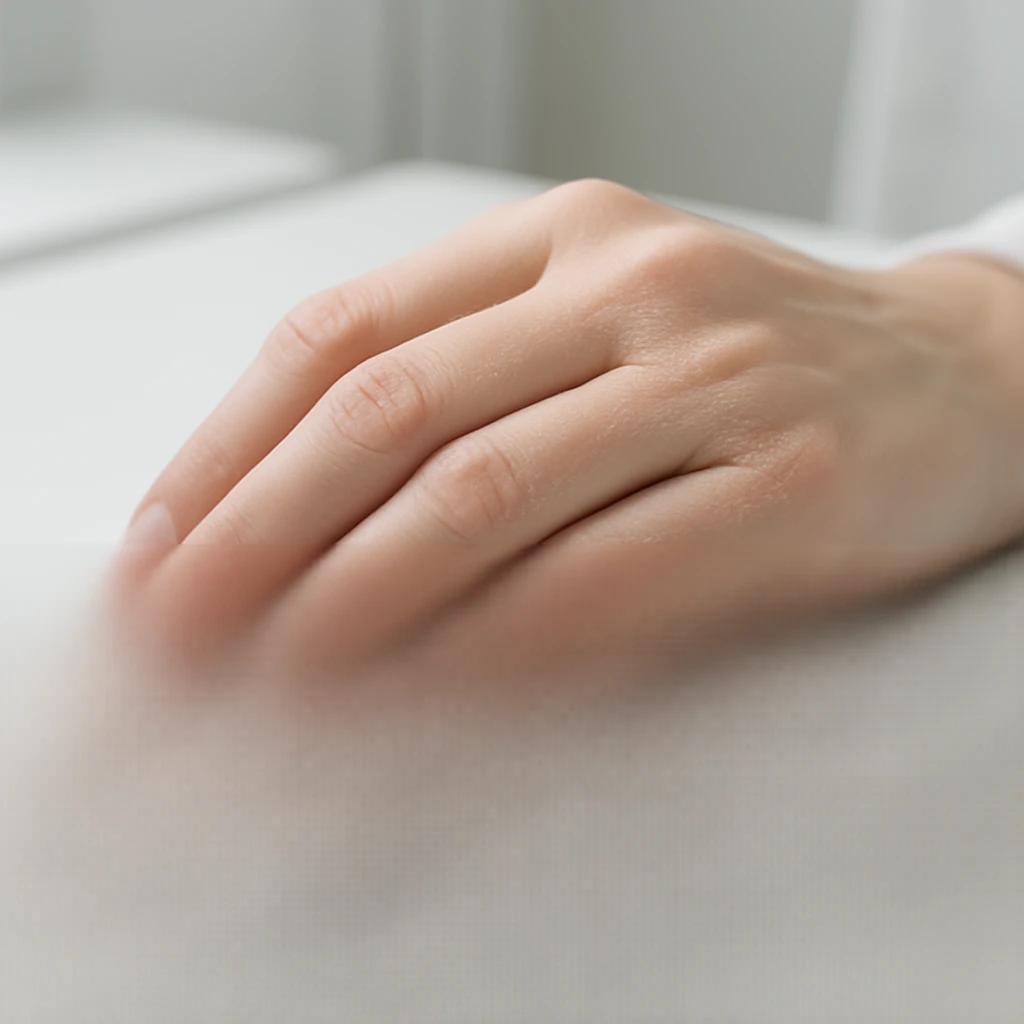How to Treat and Prevent Cracked Heels Safely at Home
Cracked Heels: Definition and Clinical Importance
What Are Cracked Heels?
Cracked heels, also known as heel fissures, are linear breaks that form in the thickened outer layer of skin, called the stratum corneum, along the posterior and plantar margins of the heel. They typically arise where the skin is dry and less elastic, leading to splitting under pressure. These fissures are visible as fine to deep grooves or splits within areas of hyperkeratosis-the build-up of hardened, callused skin that results from chronic friction and weight-bearing.
- Initially appear as dry or rough patches on the heel surface.
- May deepen over time due to repeated stress and loss of elasticity.
- Can become painful, bleed, or expose tender underlying tissue in severe cases.
In many individuals, cracked heels start as mild dryness or rough patches that cause little to no discomfort. Over time, the combination of repeated mechanical stress and dehydration of the skin can deepen these fissures. As they extend into the dermal layers, pain can develop, especially when standing or walking. In severe cases, the cracks may bleed or expose tender underlying tissue, making movement difficult and uncomfortable.
Clinical Significance
Although cracked heels are often perceived as a cosmetic issue, they carry important clinical implications. Once fissures deepen, the skin’s natural barrier function is compromised, allowing microorganisms to penetrate and increasing the risk of infection.
- Loss of barrier protection increases infection risk.
- Bacterial invasion can lead to cellulitis, particularly in people with diabetes or poor circulation.
- Persistent pain and discomfort can limit mobility and affect quality of life.
If bacteria invade surrounding tissue, a localized infection such as cellulitis can develop, especially in individuals with diabetes or poor circulation. Even in otherwise healthy people, deep or painful heel fissures can significantly affect mobility and quality of life. Recognizing cracked heels early helps prevent complications and underscores that these lesions represent structural skin breakdown rather than simple dryness.

Cracked Heels: Causes and Contributing Factors
The Role of Dryness and Skin Barrier Failure
The most fundamental cause of cracked heels is the loss of moisture within the outermost layer of the skin, the stratum corneum. When this layer becomes excessively dry, its flexibility and elasticity decrease, making it more susceptible to fissuring. This condition, known as xerosis, leads to a brittle skin surface that breaks under tension. Individuals who have chronic dryness of the feet or a tendency toward callus formation are especially susceptible, as the thickened, inflexible skin cannot expand or contract properly under pressure.
- Loss of skin moisture reduces elasticity and resilience.
- Dry, thickened areas become rigid and prone to cracking.
- Chronic dryness and callus formation increase susceptibility to fissures.
Once dryness sets in, small surface cracks can deepen with continued pressure from walking or standing. These minor fissures can extend into the deeper layers of the epidermis, progressing to clinically significant heel fissures that require treatment.
Mechanical Stress and Pressure
Mechanical forces play a major role in the progression of cracked heels. The heel endures repetitive vertical pressure each time the foot strikes the ground. Over time, this stress-especially at the edges of thickened skin on the heel’s rim-promotes outward expansion and splitting. The development of a dense callus along the heel margin can further increase local pressure, making the area prone to deeper cracking.
- Repeated weight-bearing pressure causes expansion and fissuring of callused skin.
- Prolonged standing, walking barefoot, or using open-heeled footwear increases friction.
- Hard flooring surfaces and obesity add mechanical load to the heel.
Environmental and lifestyle factors amplify this stress. Prolonged standing, barefoot walking, or open-heeled footwear exposes the heel to friction and weight-bearing forces. Hard flooring intensifies pressure due to lack of cushioning, while obesity adds to the mechanical burden by increasing plantar pressure, further predisposing the heel to fissuring.
Systemic and Dermatologic Conditions
Beyond mechanical and environmental causes, several medical and dermatologic conditions contribute to heel fissure development. People with diabetes or peripheral vascular disease are at particularly high risk, not only because their skin tends to be drier but also because reduced circulation and impaired sensation delay detection and healing. Age-related thinning of the skin and reduced lipid content also weaken its barrier function, making older adults more vulnerable.
| Condition | Mechanism Increasing Risk |
|---|---|
| Diabetes | Reduced circulation and neuropathy delay healing and detection. |
| Peripheral vascular disease | Impaired blood flow slows tissue repair. |
| Advanced age | Thinner skin and reduced lipid barrier increase dryness. |
| Eczema, psoriasis, tinea pedis | Inflammation and keratin buildup weaken skin elasticity. |
Chronic skin disorders such as eczema, psoriasis, and tinea pedis lead to persistent inflammation, scaling, and keratin buildup, further impairing elasticity. These secondary causes create a cycle of dryness and thickening that promotes fissuring. Understanding these underlying contributors helps explain why cracked heels are common yet multifactorial in origin.

Recognizing and Assessing Cracked Heels
Visual and Sensory Clues
Cracked heels typically begin as areas of dryness and thickened skin on the heel margin. Early signs include roughness, scaling, and the formation of yellow or whitish callused patches. As the skin loses elasticity, fine surface cracks appear, which may progress into deeper fissures extending into the dermal layers. These deeper cracks can bleed and cause significant pain, often making walking or prolonged standing uncomfortable.
- Early indicators: dryness, roughness, scaling, and callus formation.
- Moderate cases: visible cracks, tenderness, or mild bleeding.
- Severe cases: deep fissures, redness, crusting, or signs of infection.
Severity is judged by both appearance and symptoms. Mild cases may involve only superficial dryness, while severe fissures show visible depth, redness, and possible crusting or exudate, indicating inflammation or infection. Pain on weight-bearing or movement often signals deeper tissue involvement.
Clinical Evaluation
Diagnosis of cracked heels is clinical, based on direct inspection. The examiner evaluates the degree of hyperkeratosis, depth and number of fissures, and any signs of redness, swelling, or discharge that suggest infection. Palpation helps assess tenderness and tissue involvement. Documentation includes pain level, bleeding, and functional limitations such as difficulty standing or walking.
| Assessment Component | Clinical Focus |
|---|---|
| Visual inspection | Evaluate fissure depth, hyperkeratosis, inflammation, and infection. |
| History taking | Footwear habits, occupational standing, and environmental exposure. |
| Comorbidities | Assess for diabetes, vascular disease, or skin disorders. |
| Functional impact | Document pain level, bleeding, and mobility limitations. |
Evaluation also includes patient history, focusing on footwear, occupational standing time, and environmental exposures. Identifying dermatoses such as psoriasis, eczema, or fungal infection is key to guiding treatment. In patients with diabetes or vascular disease, assessment of perfusion and sensory function is vital to detect neuropathy or ischemia that may delay healing.
Red Flags and Referral Indicators
Some fissures indicate more serious issues requiring professional care. Persistent or deep cracks with pain, redness, or discharge need closer assessment. In people with diabetes, peripheral vascular disease, or compromised immunity, even small fissures can progress rapidly to infection or ulceration.
Red Flags
- Fissures that are deep, bleeding, or increasingly painful.
- Signs of infection such as redness, warmth, or pus.
- Cracks in patients with diabetes, neuropathy, or poor circulation.
- Persistent or recurrent fissures despite routine care.
These situations require prompt medical assessment to prevent complications such as cellulitis or delayed wound healing.

Treating Cracked Heels: Self-Care and Specialist Management
Core Conservative Management
Treatment for cracked heels focuses on restoring hydration and reducing thickened skin. Regular application of emollients maintains moisture within the stratum corneum and prevents further fissure formation. These moisturizers soften the skin and support barrier repair, reducing discomfort and the risk of deeper cracking. Urea-containing creams are particularly effective for heel fissures, improving hydration and reducing scaling through mild keratolytic action.
- Hydration: Daily use of emollients to restore skin moisture.
- Keratolytic support: Urea-based formulations to improve texture and scaling.
- Exfoliation: Gentle debridement with a pumice stone or file after bathing.
Gentle debridement removes excess callus tissue. Using a pumice stone or foot file on softened skin after bathing helps reduce hyperkeratosis and relieve localized pressure. This should be done carefully to avoid injury. Combined with regular moisturization, these methods form the first line of care for uncomplicated cases of cracked heels.
Adjunctive and Protective Measures
For deeper or painful fissures, adjunctive care may be necessary. Occlusive dressings, hydrogel bandages, or adhesive taping can help approximate fissure edges and reduce further splitting. These coverings also prevent contamination, retain moisture, and support natural repair. When pain limits walking, soft gel heel pads or cushioned footwear can provide relief.
Topical keratolytics containing urea, salicylic acid, or lactic acid are often used to soften and exfoliate hyperkeratotic skin. When used appropriately, these formulations enhance the effect of emollients and promote smoother turnover. Regular care combining hydration, exfoliation, and protection accelerates recovery and helps prevent recurrence.
| Adjunctive Measure | Primary Benefit |
|---|---|
| Occlusive dressings or adhesive taping | Protects fissure edges and retains moisture |
| Hydrogel or gel bandages | Reduces pain and contamination risk |
| Soft heel pads or cushioned shoes | Relieves pressure during walking |
When to Involve a Specialist
Professional evaluation is recommended for cracked heels that do not respond to conservative care or show signs of complications. Referral to a podiatrist or dermatologist is indicated for deep, painful, or recurrent fissures, which may require specialized debridement, prescription-strength topicals, or wound dressings. In patients with diabetes, peripheral vascular disease, or neuropathy, even minor cracks can lead to infection due to impaired healing and reduced sensation.
When to Seek Medical Attention
- Persistent or worsening fissures despite home care.
- Spreading redness, swelling, or pus formation.
- Fever or systemic symptoms of infection.
- Fissures in patients with diabetes, neuropathy, or poor circulation.

Preventing and Managing Cracked Heels Long Term
Daily Foot Care and Moisturization
Long-term management of cracked heels centers on maintaining hydration and monitoring for early signs of dryness. Consistent use of emollients helps restore and preserve the skin’s natural barrier, reducing the likelihood of fissure recurrence. Applying moisturizer after bathing, when the skin is most receptive to absorption, helps retain water in the stratum corneum and prevent thickening of the heel margin. Regular inspection of the heels for roughness or scaling allows early intervention before fissures form.
- Apply emollients daily, especially after bathing.
- Inspect heels regularly for roughness or scaling.
- Address early signs of dryness before fissures develop.
Footwear and Lifestyle Adjustments
Proper footwear plays a critical role in preventing cracked heels. Closed-back, cushioned shoes distribute weight more evenly across the heel and reduce excessive friction or pressure that can contribute to splitting. Avoiding prolonged standing on hard surfaces and minimizing barefoot walking help decrease mechanical strain. For individuals with recurrent fissures, orthotic inserts or soft heel pads can provide additional pressure relief and support.
| Preventive Measure | Primary Benefit |
|---|---|
| Closed-back, cushioned footwear | Evenly distributes pressure and minimizes friction |
| Limited standing or walking barefoot | Reduces mechanical stress on heel margins |
| Use of orthotic or gel heel pads | Provides additional cushioning and pressure relief |
Long-Term Outlook
Most uncomplicated cases of cracked heels heal successfully with consistent moisturization and reduction of mechanical stress. However, recurrence is common if the underlying factors-such as chronic dryness or excessive pressure-are not addressed. With ongoing preventive care, including daily hydration and proper footwear, the skin can remain supple and resilient. High-risk patients, particularly those with diabetes or circulatory issues, may experience delayed healing and require closer medical monitoring to prevent complications.
Myths vs Facts
- Myth: Cracked heels are purely a cosmetic issue. Fact: Deep fissures can lead to pain, infection, and impaired mobility.
- Myth: Heel cracks are caused mainly by vitamin deficiencies. Fact: The primary causes are dryness, mechanical pressure, and loss of skin elasticity.
- Myth: Once healed, cracked heels will not return. Fact: Without ongoing care, recurrence is common, especially in those with chronic xerosis.

Frequently Asked Questions About Cracked Heels
- Are cracked heels a sign of an underlying health condition?
- Sometimes. While most cases result from dryness and pressure, people with diabetes, thyroid disorders, or poor circulation may develop cracked heels more easily or heal more slowly.
- Why do heel fissures become painful?
- Pain develops when cracks extend deeper into the skin, exposing sensitive layers and causing inflammation. Weight-bearing and walking can worsen discomfort.
- Can cracked heels become infected?
- Yes. Deep fissures can let bacteria enter the skin, leading to infection or cellulitis, especially in individuals with diabetes or weakened circulation.
- How long does it take for cracked heels to heal?
- Mild fissures may improve within one to two weeks of regular moisturization and skin care. Deeper cracks can take longer and may need professional treatment.
- Do cracked heels always come back?
- They can recur if dryness, pressure, or footwear factors are not addressed. Consistent moisturization and cushioned shoes help reduce recurrence.
- Is walking barefoot linked to cracked heels?
- Yes. Barefoot walking increases friction and mechanical pressure on the heel, contributing to skin thickening and fissure formation over time.
- What makes some people more prone to cracked heels?
- Older adults, people who stand for long hours, and those with callused or dry skin are more likely to experience heel fissures.
- Are home remedies safe for treating cracked heels?
- Gentle exfoliation and use of moisturizers are safe for most people. However, severe cracks, bleeding, or signs of infection require medical attention.
- Can changing footwear really help cracked heels?
- Absolutely. Wearing closed-back, cushioned shoes helps distribute pressure evenly and prevents the heel rim from expanding and splitting.
- When should someone see a doctor about cracked heels?
- Seek medical evaluation if cracks are deep, painful, or infected, or if you have diabetes or vascular disease and notice slow healing.













